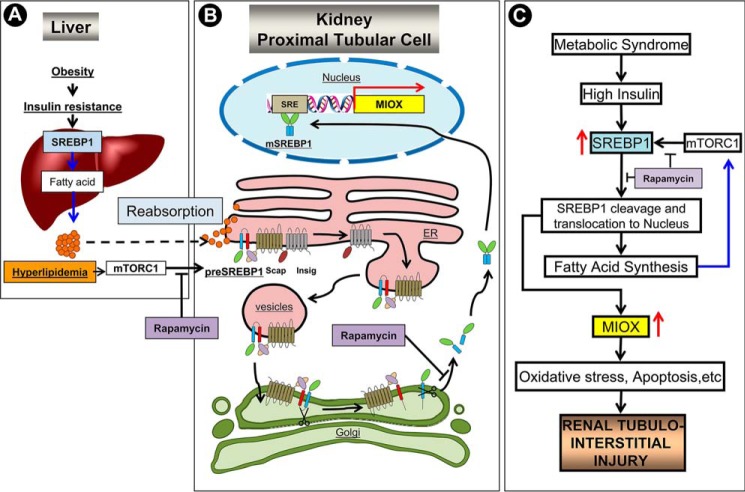FIGURE 10.
Mechanism(s) of Miox induction leading to tubulo-interstitial injury in states of obesity or metabolic syndrome. A, in states of obesity with the development of insulin resistance, there is an activation of transcription factor, Srebp1, which by modulating fatty-acid synthase (FAS) would increase the production of fatty acids in the liver. B, conceivably, the fatty acids reabsorbed by the proximal tubular cells activate mTORC1 protein kinase (48–50), which in turn would increase the expression of preSrebp1. The preSrebp1 is escorted by Scap from the endoplasmic reticulum to the Golgi via vesicular transport with simultaneous dissociation of Insig. In the Golgi saccules the preSRBEP1 is successively cleaved by site-1 and -2 proteases to generate a mature form, i.e. mSrebp1. The mSrebp1 translocates into the nucleus, binds to SREs, and initiates transcription of miox. C, summary of signaling events leading up to Miox activation, oxidant stress and thereby tubulo-interstitial injury are depicted. In addition, various steps where rapamycin conceivably can interrupt mTORC1 signaling are also depicted. ER, endoplasmic reticulum; Scap, Srebp cleavage activating protein; Insig, insulin-induced gene; SRE, sterol-response elements.

